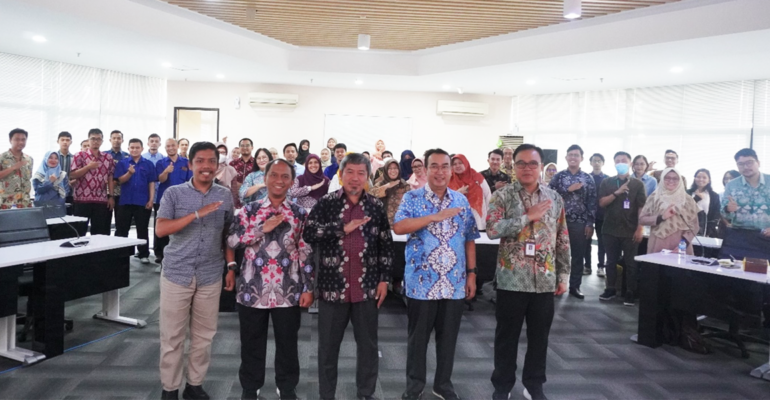Prof Ernan Rustiadi: IPB University’s Future Young Lecturer

In an effort to improve the results of research and innovation by young lecturers, the Directorate of Research and Innovation (DRI) of IPB University conducted a workshop on the calculation of the level of technology readiness (TKT). The workshop was aimed at 68 researchers from the young lecturer scheme and was held in the Academic Senate Room, Andi Hakim Nasution Building, IPB Dramaga Campus (2/11).
Vice Rector of IPB University for Research, Innovation, and Agromaritime Development, Prof Ernan Rustiadi revealed that IPB University is ready to assist the research of young lecturers. This commitment is realized by providing research schemes such as R3, which are funded by IPB University internally.
The R3 research program consists of fundamental research schemes (Ri-Fund), international collaborative research (Ri-Koin), national collaborative research (Ri-Na). The output of this activity is expected institutionally to increase the participation of lecturers, especially young lecturers, in research activities so as to produce output in the form of publications that can support the quality and quantity of university output achievements.
“Seeing young lecturers is like seeing the future of IPB University. Hopefully, the results of this young lecturer’s research output will be in the form of copyright, so that it can improve the 5th main performance indicator (IKU). The work of lecturers can later be used by the community and get international recognition by utilizing the results of research and service,” he said.
Director of Research and Innovation of IPB University, Prof Sugeng Heri Suseno, suggested to young researchers that they start collaborating with partners even though it is still classified as basic research (TKT 1-3). Such cooperation will make it easier for researchers to advance to the level of applied research (TKT 4-6).
On the same occasion, Assistant Director of Innovation, Dr drh I Ketut Mudite Adnyane revealed the importance of TKT to measure the level of maturity or readiness of a research result. The purpose of this measurement is so that technology can be adopted by users, both by the government, industry, and society.
“In addition, TKT measurement can help map technology readiness, evaluate the implementation of research and development programs or activities, and reduce the risk of failure in technology utilization,” he added.
Based on the research focus areas, TKT is divided into several sections, including general and hard engineering, software, agriculture/fisheries/livestock, health-vaccine/life products, health-medical device products, pharmaceuticals, social humanities, and education.
One of the research outputs, besides publications, can be in the form of Intellectual Property Rights (IPR). Based on data from the Sinta score page, IPR IPB University in the last three years obtained 40,515. This figure is still low compared to other universities that obtained an IPR score of 104,950.
All research results of these young lecturers are expected to be recorded as HK. This is because, in addition to increasing the sinta score of young lecturers, it can also be a record of research. (*/Rz) (IAAS/MZS)



